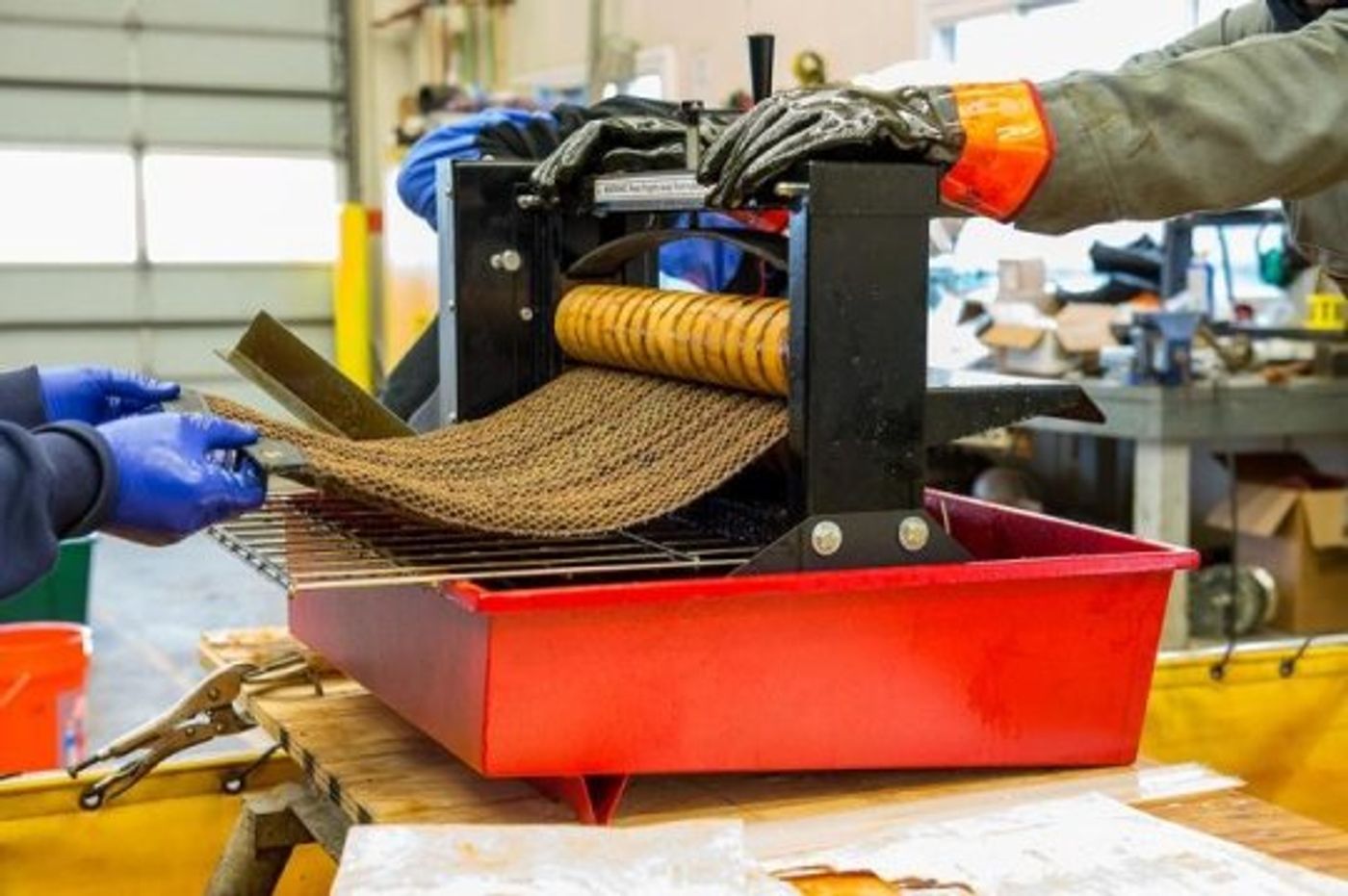Environmental Innovation: This sponge can soak up 90 times its weight in oil
Behold, Oleo Sponge: the polyurethane foam coated in silane which attracts oil. Invented by researchers at Argonne National Lab, the sponge can absorb up to 90 times its weight in oil, be reused up to 100 times, and pull dispersed oil from the entire water column -- not just the surface. This is a big deal in the world of oil spills (which is everyone’s world these days).
The reusable feature is particularly important, as floating absorbent materials called sorbents, the most popular technology we currently have for cleaning up spills, can only be used once. This means they must be collected and disposed of elsewhere, creating a lot of waste in the meantime and costing a lot of extra money for the fabrication process. And they only soak up between 3 and 70 times their weight in oil.
Of course the Oleo sponge has its faults too. The ratio of the polyurethane to silane has to be very precise because with too little silane the sponge won't absorb the oil, and with too much the sponge can't be reused. Because of this, it may be difficult to rely on the sponge for clean up in the open ocean. Nevertheless, coastal areas will still benefit greatly from its uses.
“I see it as a major advance in cleaning small spills and spills close to coastlines where dispersants cannot be used easily,” says Vijay John at Tulane University in New Orleans, Louisiana.
“In an ideal world, you would have warehoused collections of this foam sitting near wherever there are offshore operations… or where there’s a lot of shipping traffic, or right on rigs… ready to go when the spill happens,” says Seth Darling, the creator of the material.
The team is continuing to work on additional tests and refining the manufacturing process for large-scale production. They have tested the material in a pool that is set up to run emergency cleanup strategies for oil spills. To do this, the team made a block of 6 meter square pads of the sponge. “We made a lot of the foam, and then these pieces of foam were placed inside mesh bags – basically laundry bags, with sewn channels to house the foam,” Darling says. They then dragged the sponges behind a pipe spewing crude oil to test the material’s capability to remove oil from the water, reports New Scientist. They next sent the sponges through a wringer to remove the oil and then repeated the process, carrying out many tests over multiple days. The oil that is wrung out is able to be recycled again for future uses.
“Our treated foams did way better than either the untreated foam that we brought or the commercial sorbent,” says Darling.
The team hopes that the sponge will be ready before it is needed - although idealistically, it wouldn’t be needed at all!
Sources: New Scientist, ScienceDaily, Popular Mechanics









